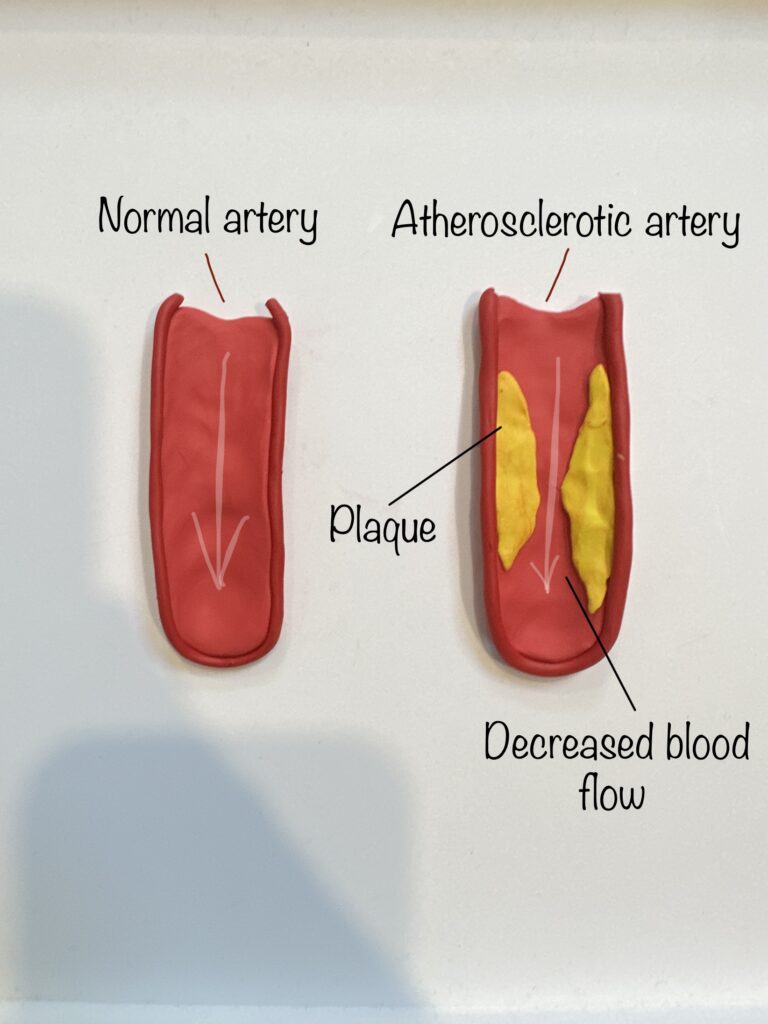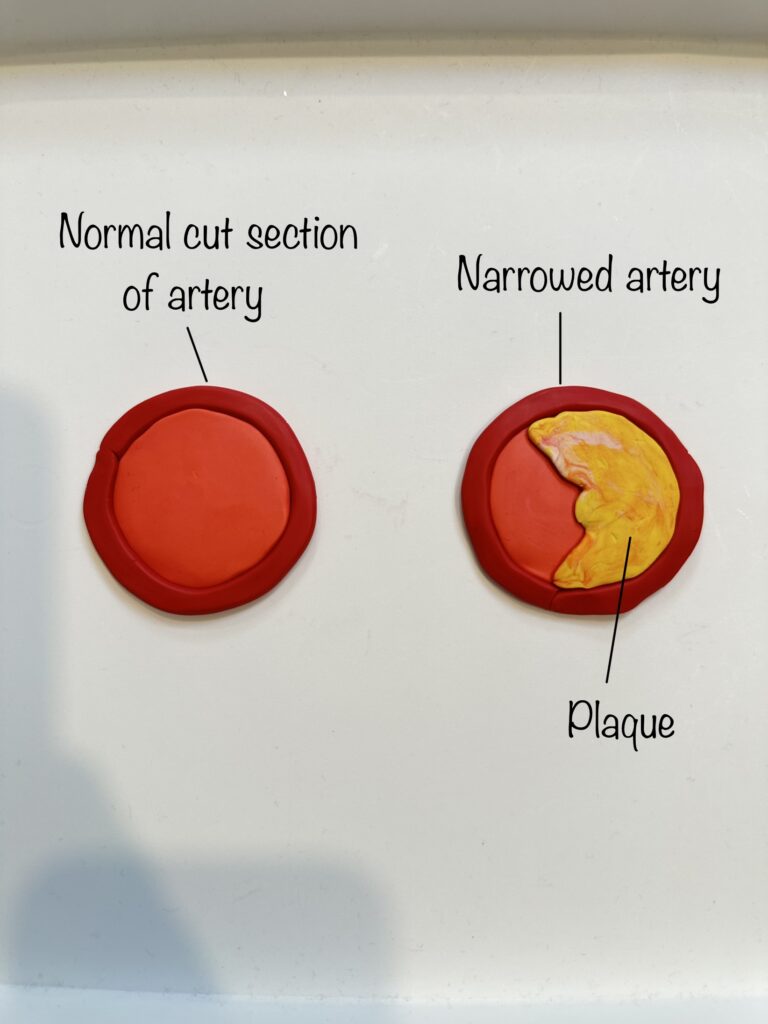

For my Steam project, the course objective that I will be covering is the cardiovascular system: blood vessels and circulation, specifically “describe the disorders of blood and how they can be treated.”
We will be taking a look into Peripheral artery disease. I used clay to represent a normal artery vs an atherosclerotic artery.
Peripheral artery disease affects around 13% of the Western population over 50 years old. It is most commonly due to atherosclerosis, where an atherosclerotic plaque causes arterial stenosis or occlusion (Morley et al., 2018). This means the artery has fatty deposits and calcium buildup in the walls, which causes reduced blood flow to the limbs because of the narrowing and blockage of the vessels.
PAD affects both men and women, but African Americans are at a higher risk and Hispanics may have slightly higher rates compared to non-Hispanic white individuals. In the United States, around 6.5 million people aged 40 and older have PAD. Most patients have no signs or symptoms of the disease, but many experience pain on walking (claudication). Claudication symptoms include muscle pain or cramping in the legs or arms that starts when an individual exercises and stops when you rest. The pain is usually in the calf and can range from mild to severe. Severe pain may make it difficult to walk or do other physical activities (Peripheral Artery Disease (PAD) – Symptoms and Causes – Mayo Clinic, 2022). Other symptoms of PAD include leg numbness or weakness, coldness in the lower leg or foot, no sign of pulse or weak pulse in the legs or feet, painful cramping in the hips, thighs, or calf muscles after activities like walking or climbing stairs, skin on legs looks shiny, skin color changes on legs, sores on legs, feet, and toes that don’t want to heal, arm pain such as aches and cramps with activities like writing or other tasks, erectile dysfunction, slower growth of toenails and hair, and even hair loss on legs.
Critical limb ischemia (CLI) is a serious form of peripheral arterial disease. ClI occurs when the reduction in blood flow is so severe that it causes pain in the feet or toes, even when resting.
The main risk for PAD is smoking. However, other risk factors include high blood pressure, atherosclerosis, high cholesterol, diabetes, and age over 60.
Peripheral Artery Disease is treated with medication, exercising with a supervised program, quitting smoking, and maintaining a healthy diet, and in some cases, individuals may need surgeries. The best way to prevent PAD in the first place is to avoid smoking, get plenty of physical activity, control high blood pressure, and manage high blood cholesterol and diabetes.
Citation:
Morley, R., Sharma, A., Horsch, A. D., & Hinchliffe, R. J. (2018). Peripheral artery disease. BMJ. British Medical Journal, j5842. https://doi.org/10.1136/bmj.j5842
Bonaca, M. P., & Creager, M. A. (2015). Pharmacological treatment and current management of peripheral artery disease. Circulation Research, 116(9), 1579–1598. https://doi.org/10.1161/circresaha.114.303505
Peripheral Arterial Disease (PAD) | cdc.gov. (2022, December 19). Centers for Disease Control and Prevention. https://www.cdc.gov/heartdisease/PAD.htm
Peripheral artery disease (PAD) – Symptoms and causes – Mayo Clinic. (2022, June 21). Mayo Clinic. https://www.mayoclinic.org/diseases-conditions/peripheral-artery-disease/symptoms-causes/syc-20350557
Critical Limb Ischemia | Vascular Center | UC Davis Health. (n.d.). Health.ucdavis.edu. https://health.ucdavis.edu/vascular/diseases/cli.html#:~:text=What%20is%20critical%20limb%20ischemia

Julia’s project takes a great look at peripheral arterial disease, otherwise known as PAD. PAD is a disorder of the circulatory system in which the arteries experience an occlusion of calcium or fatty acids that drastically reduces blood flow to the limbs. In people who have PAD, they may experience many symptoms including painful ambulation, muscle soreness and pain, and difficulty performing exercise. People who smoke, have high cholesterol, or high blood pressure are at a greater risk of developing PAD. PAD can be treated with the use of medications and lifestyle changes, but more severe cases may need surgery. When looking at the arteries that Julia created, it is clear to see how blood flow may be affected when there is an increase of buildup in the peripheral arteries. As the project states, it is important to maintain a healthy lifestyle, and to avoid smoking in order to prevent PAD from developing.